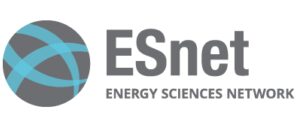- About
- Network
- Community
- Initiatives
- News
- Events
- Blog
- Publications
Connectivity
In order to further its mission to encourage innovation, CENIC maintains significant relationships and network connections with a variety of other network providers.
Americas Lightpaths: www.amlight.net

Americas Lightpaths (AmLight) enables research and education amongst the people of the Americas through the operation of production infrastructure for communication and collaboration between the U.S. and Western Hemisphere science and engineering research and education communities.
The effort is fundamentally collaborative, encompassing the U.S. National Science Foundation's AmLight support and committed financial resources of AURA, REDNESP, and RNP, the resources of FIU and FLR, CENIC, Atlantic Wave and Pacific Wave, and the networks of REDNESP, CUDI, RedCLARA, REUNA, and RNP. Through Atlantic Wave and Pacific Wave, there is production connectivity and peering to North American backbone networks Internet2, ESnet, and CANARIE.
Through RedCLARA there is production connectivity to eighteen national research and education networks (NRENs). These networks will enhance global e-Science collaborations through distributed production peering fabrics, as well as any research and education networks present or future that comes to the Atlantic Wave or Pacific Wave.
California Telehealth Network: caltelehealth.org

California Telehealth Network’s mission is to promote advanced information technologies and services to improve access to high quality healthcare focusing on medically underserved and rural Californians.
An independent non-profit 501(c)3, CTN was initially funded through the FCC's Rural Health Care Pilot Program which provided CTN with $22.1 million, the largest single state award of its kind. Additional funding has been provided by the California Emerging Technology Fund, the California HealthCare Foundation, the California Teleconnect Fund, the National Coalition for Health Integration, United HealthCare and the University of California.
Corporación Universitaria para el Desarrollo de Internet (CUDI): www.cudi.edu.mx

The Corporación Universitaria para el Desarrollo de Internet (CUDI) is a Mexican nonprofit corporation composed of members from the public and private sectors. CUDI funds an advanced, high-speed network in Mexico and has agreements with a number of carriers that provide high-performance applications to higher education and research institutions.
Energy Sciences Network: www.es.net

ESnet provides the high-bandwidth, reliable connections that link scientists at national laboratories, universities and other research institutions, enabling them to collaborate on some of the world's most important scientific challenges including energy, climate science, and the origins of the universe.
Funded by the U.S. Department of Energy's (DOE) Office of Science and located within the Scientific Networking Division at Lawrence Berkeley National Laboratory, ESnet provides scientists with access to unique DOE research facilities and computing resources. CENIC's CalREN connects to ESnet via a 100G connection in Sunnyvale.
Internet2: www.internet2.edu

Internet2 is an exceptional community of U.S. and international leaders in research, academia, industry, and government who create and collaborate via innovative technologies. Together, we accelerate research discovery, advance national and global education, and improve the delivery of public services.
Our community touches nearly every major innovation that defines our modern digital lives, and we continue to define "what's next." CENIC provides its associates with 10 Gb/s Ethernet connections to the national Internet2 backbone, in southern California and Seattle.
Pacific Wave: www.pacificwave.net

Pacific Wave (www.pacificwave.net) is a state-of-the-art international peering exchange facility designed to serve research and education networks throughout the Pacific Rim and the world. A joint project between CENIC and the Pacific Northwest Gigapop in collaboration with the University of Southern California and the University of Washington, Pacific Wave creates a new peering paradigm by removing the geographical barriers of traditional peering facilities.
It enables any US or international network to connect at any of three locations along the US Pacific coast, as well as offers the option to peer with any other Pacific Wave participant, regardless of physical location. By presenting a seamless, unified, international peering exchange facility at strategic Pacific coast locations, the Pacific Wave peering facility will be a magnet for research and education partners throughout Canada, Mexico, South America and the Pacific Rim.
Western Regional Network: westernregional.net

The Western Regional Network is a multi-state partnership to provide advanced, robust high-speed networking for research, education, and related uses. WRN is a collaboration of the Pacific Northwest Gigapop (PNWGP) in Washington, the Front Range GigaPoP (FRGP) in Colorado and Wyoming, the University of New Mexico on behalf of the State of New Mexico, the Corporation for Education Network Initiatives in California (CENIC), and the University of Hawaii.
WRN serves the following states: Alaska, California, Colorado, Hawaii, Idaho, Montana, New Mexico, Oregon, Washington, Wyoming, with a fiber/terminus/pop at StarLight in Chicago.
